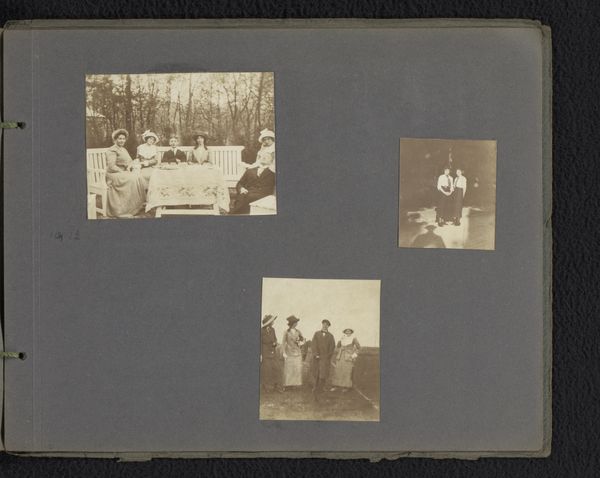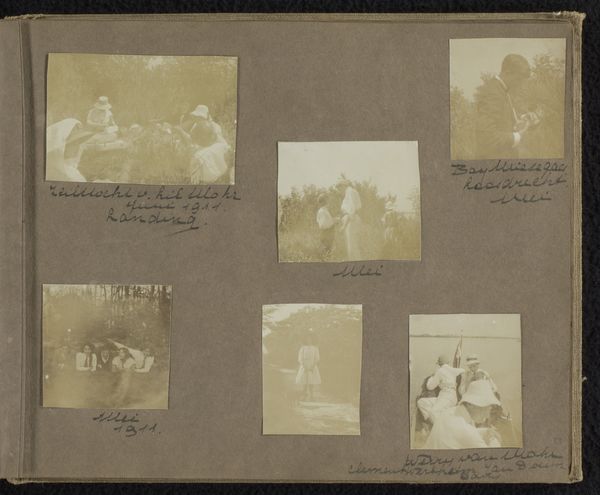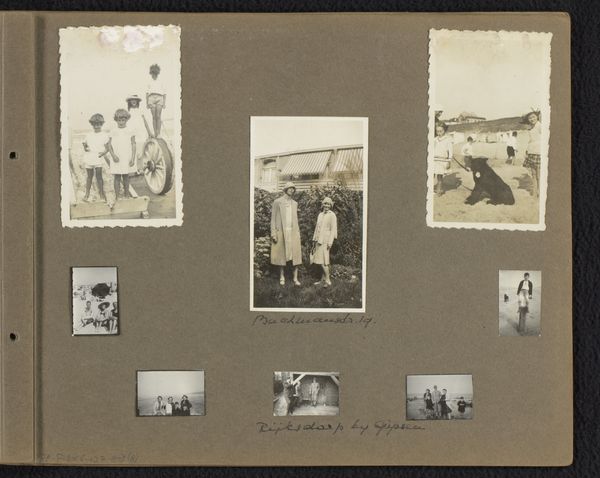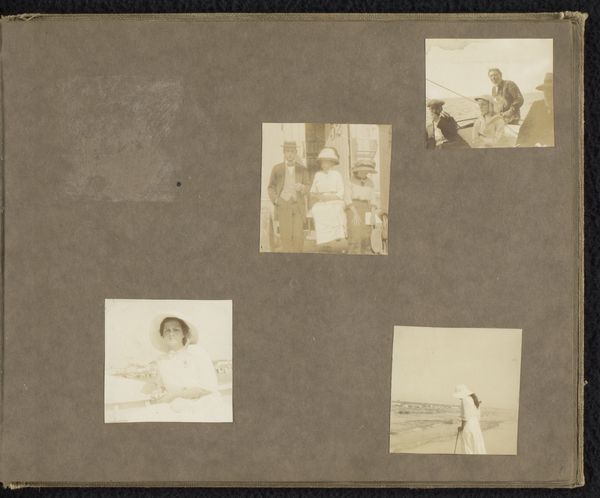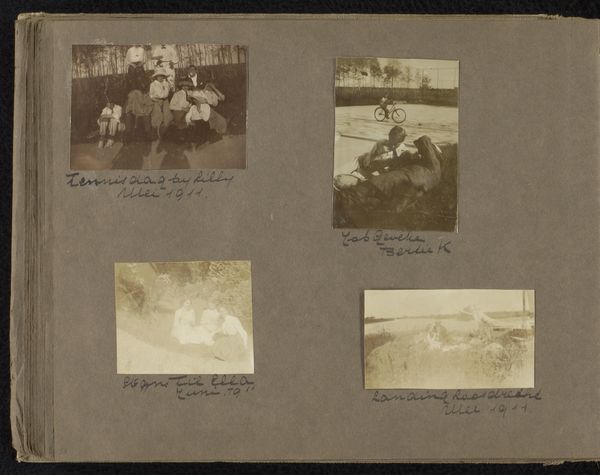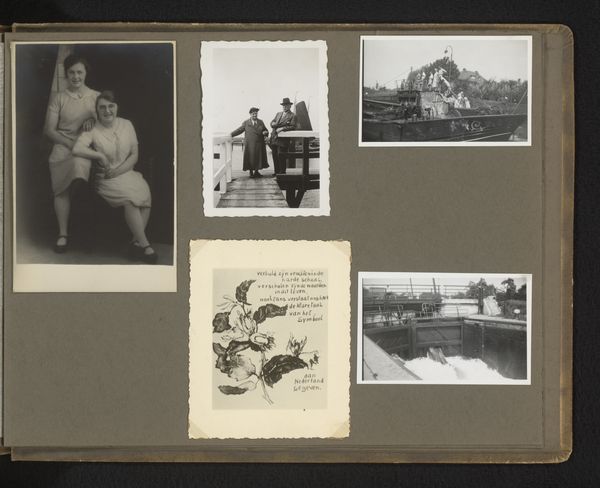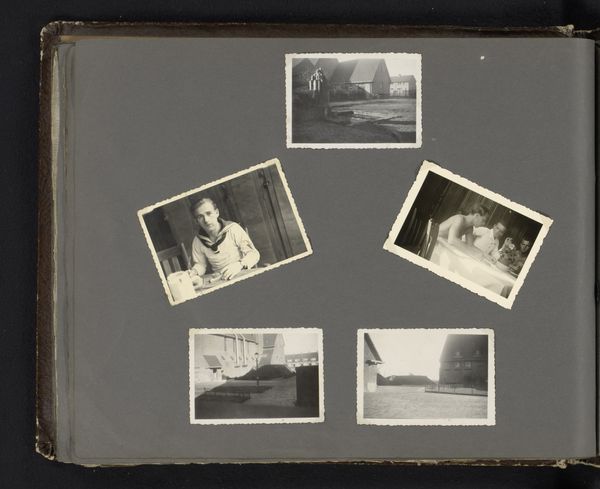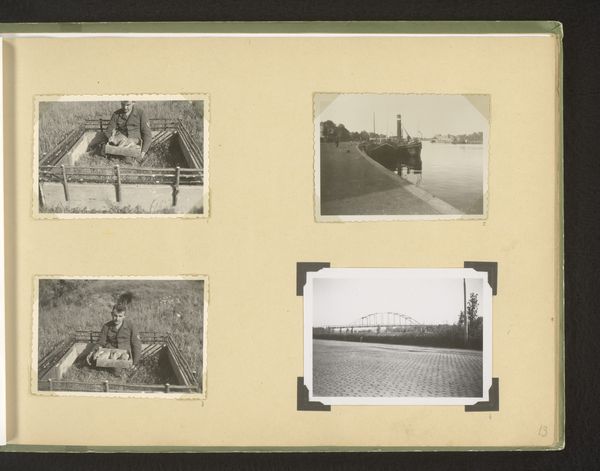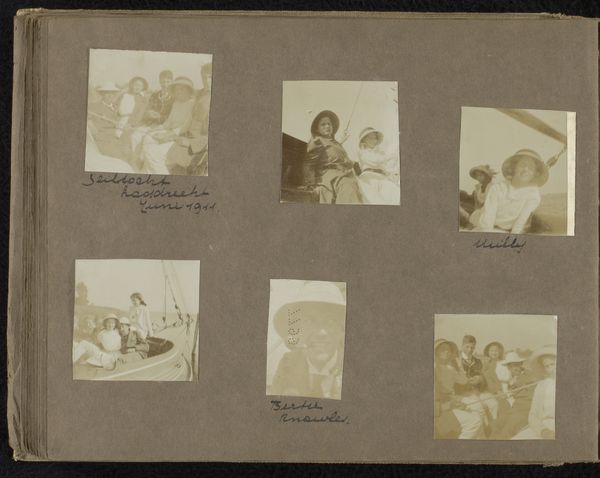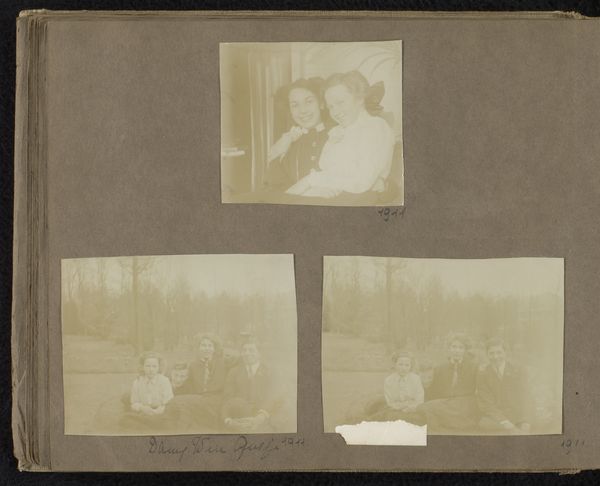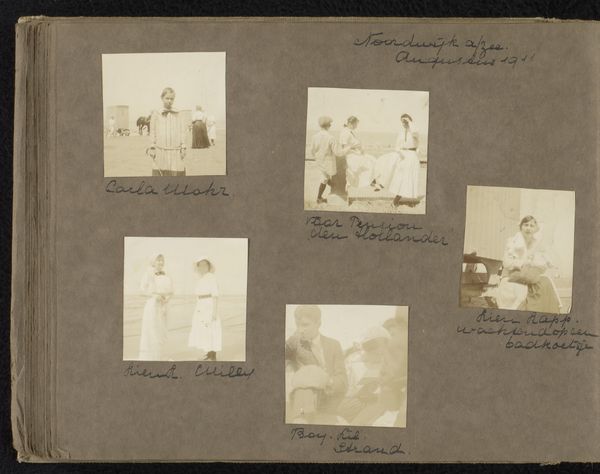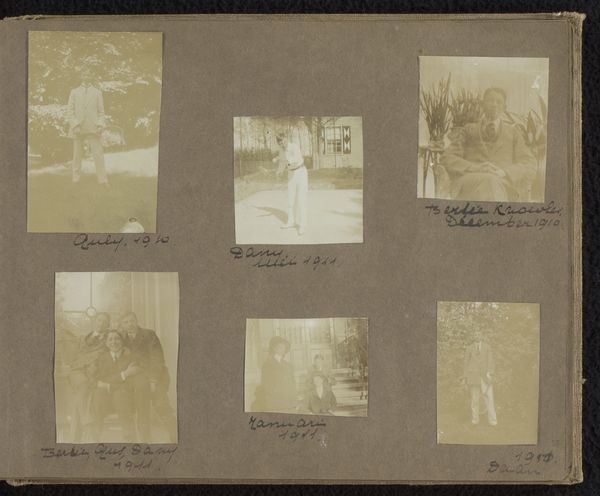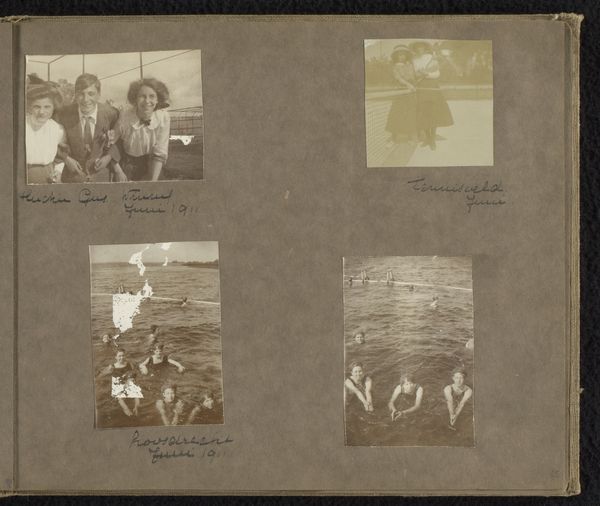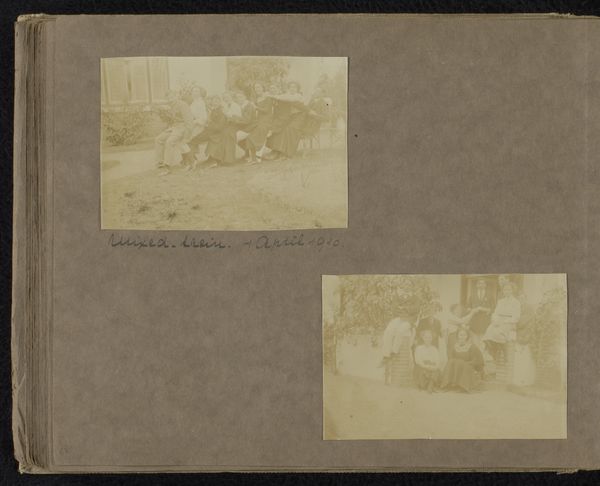
Vijf foto's van vrienden van Loentje Onnen zeilend en tennissend 1911 - 1915
0:00
0:00
Dimensions: height 203 mm, width 253 mm
Copyright: Rijks Museum: Open Domain
Editor: These albumen prints, dating from around 1911 to 1915, are titled "Vijf foto's van vrienden van Loentje Onnen zeilend en tennissend," which translates to "Five photos of friends of Loentje Onnen sailing and playing tennis." They offer glimpses into leisure activities. What's your interpretation of this album page? Curator: I find it compelling to view these not just as charming snapshots of privileged leisure, but as documents revealing the constructed nature of social identity at the time. Albumen prints, a labor-intensive photographic process, speaks to the time, resources, and access required to even produce such an image. This begs questions: Who was Loentje Onnen? What were her means, to enable such recordings? And what labour sustained her pursuits of leisure and that of her circle of friends? Editor: That’s a really interesting point. It shifts the focus from just the activities depicted to the broader economic structure. It’s also strange to think that this style would be superseded so rapidly in the decades that followed. Does the fact that they were preserved also make the works take on new or different meanings? Curator: Absolutely. Their survival speaks volumes about what was deemed important enough to preserve. Also note that the creation and consumption of photography was limited to a smaller population than today. So, we must consider it in relation to other contemporary mediums like paintings, in terms of circulation. What does this imply for photography as an elevated medium, versus one of record? Editor: So, by looking at the materials and the act of production, we can understand more about social structures in this time. Curator: Precisely. This isn't merely a depiction of friends at play, but also evidence of particular material conditions and a specific social milieu. By examining the choices in process and consumption, we learn what those involved were consuming and making. Editor: Thanks, that's really helpful in framing how I look at this photograph from the early twentieth century. I have to confess, it really did just look like innocent pictures. Curator: That's the fun of it. Everyday experiences, especially old ones, offer such incredible insights.
Comments
No comments
Be the first to comment and join the conversation on the ultimate creative platform.
